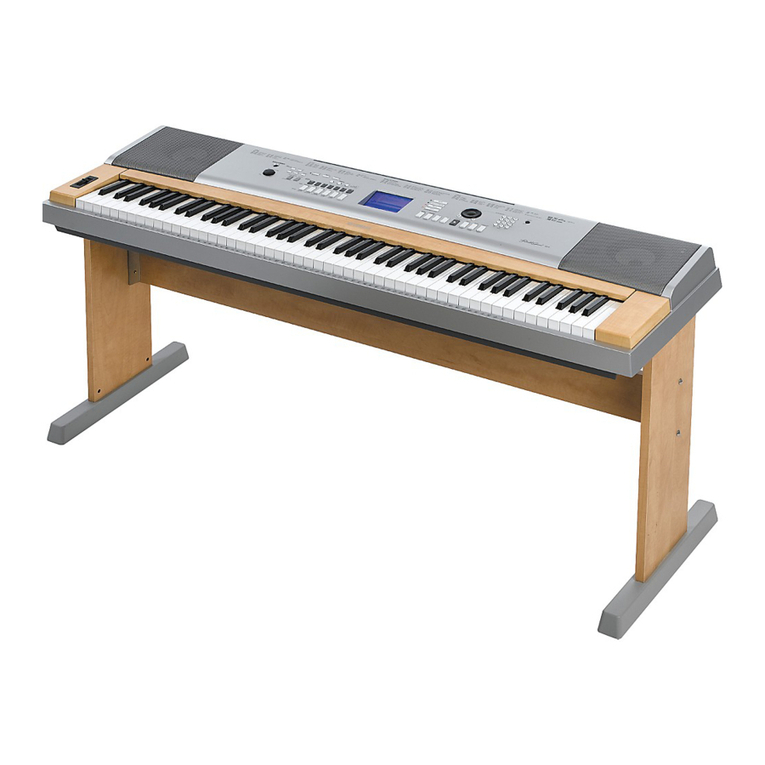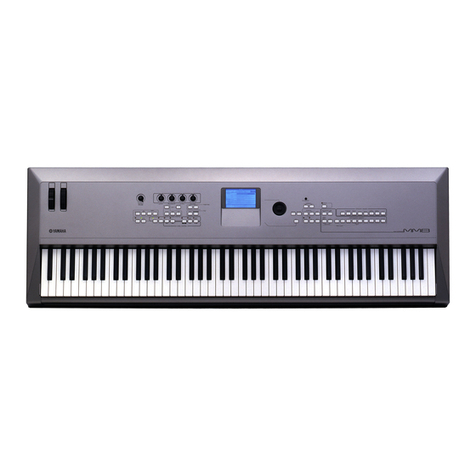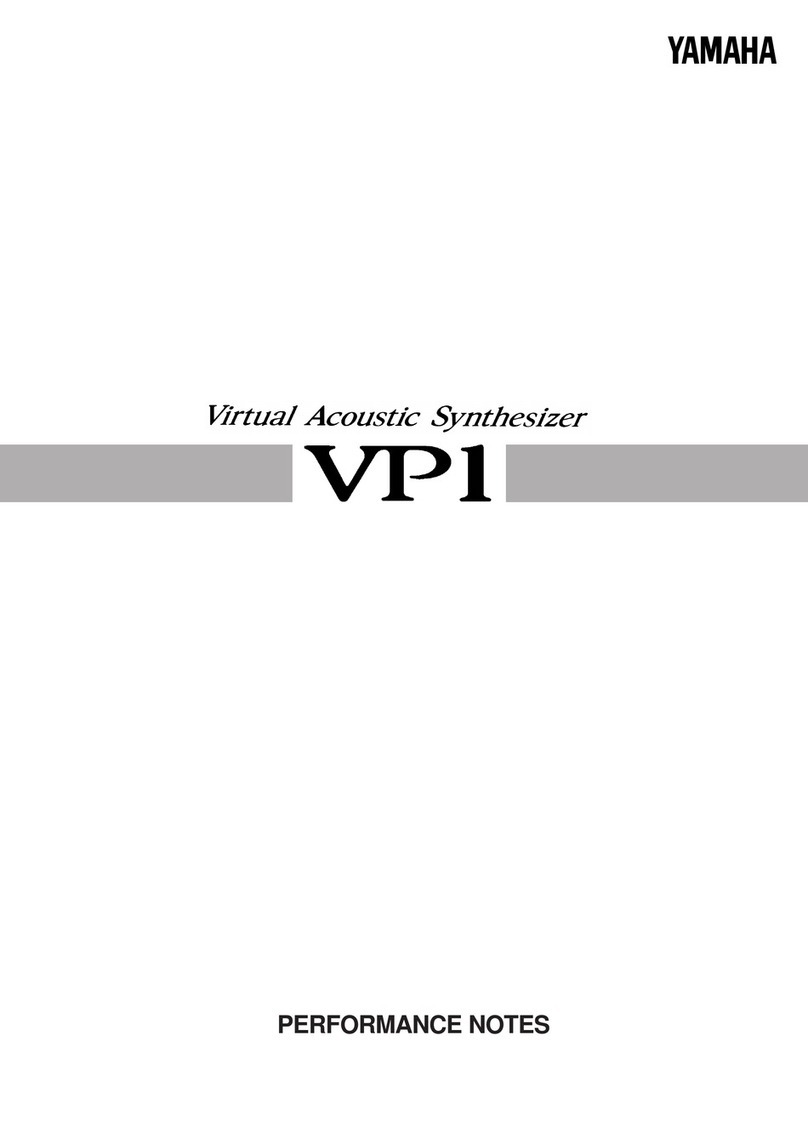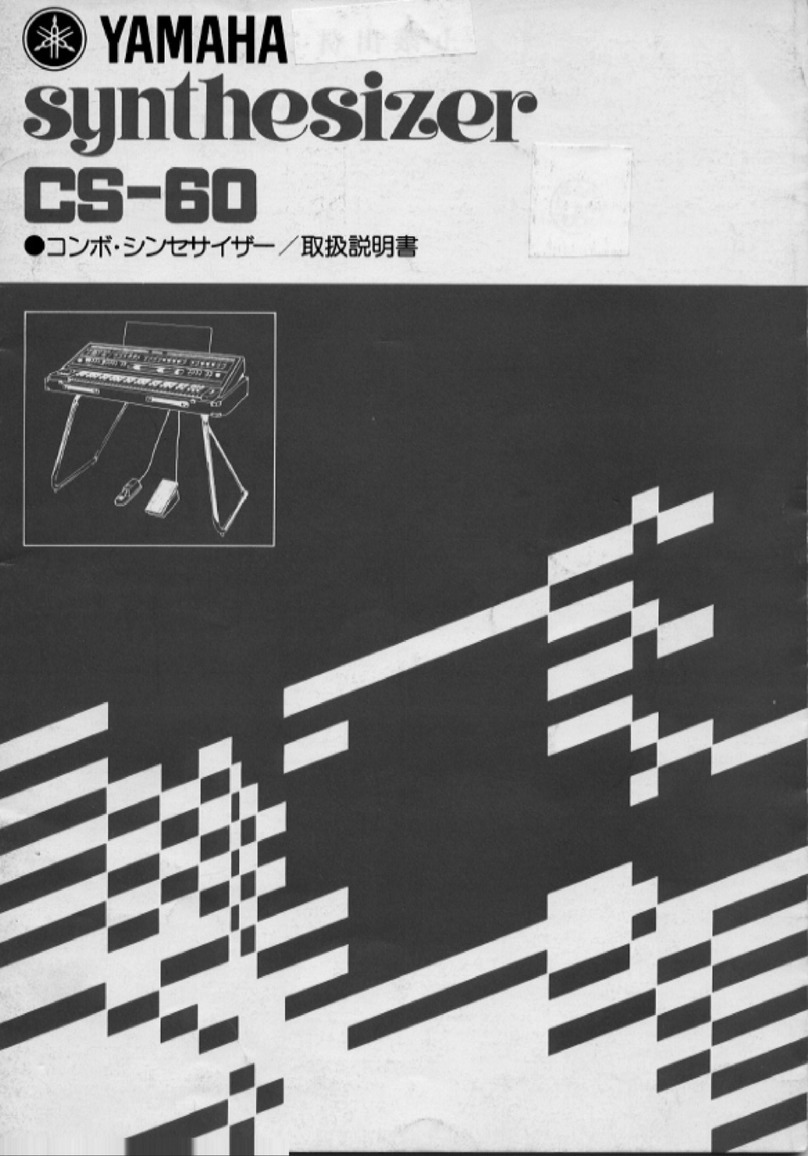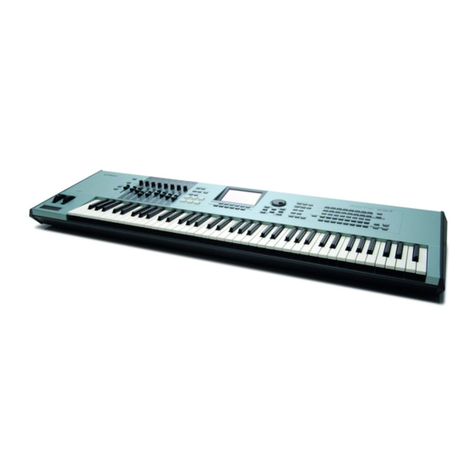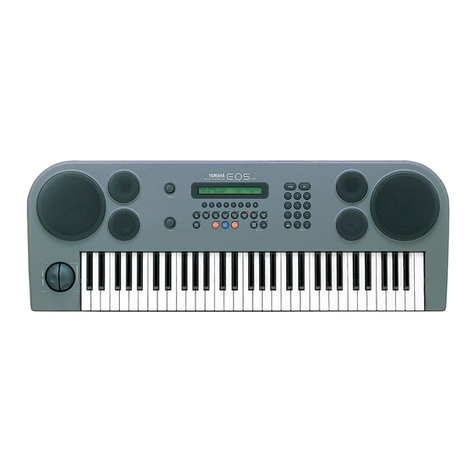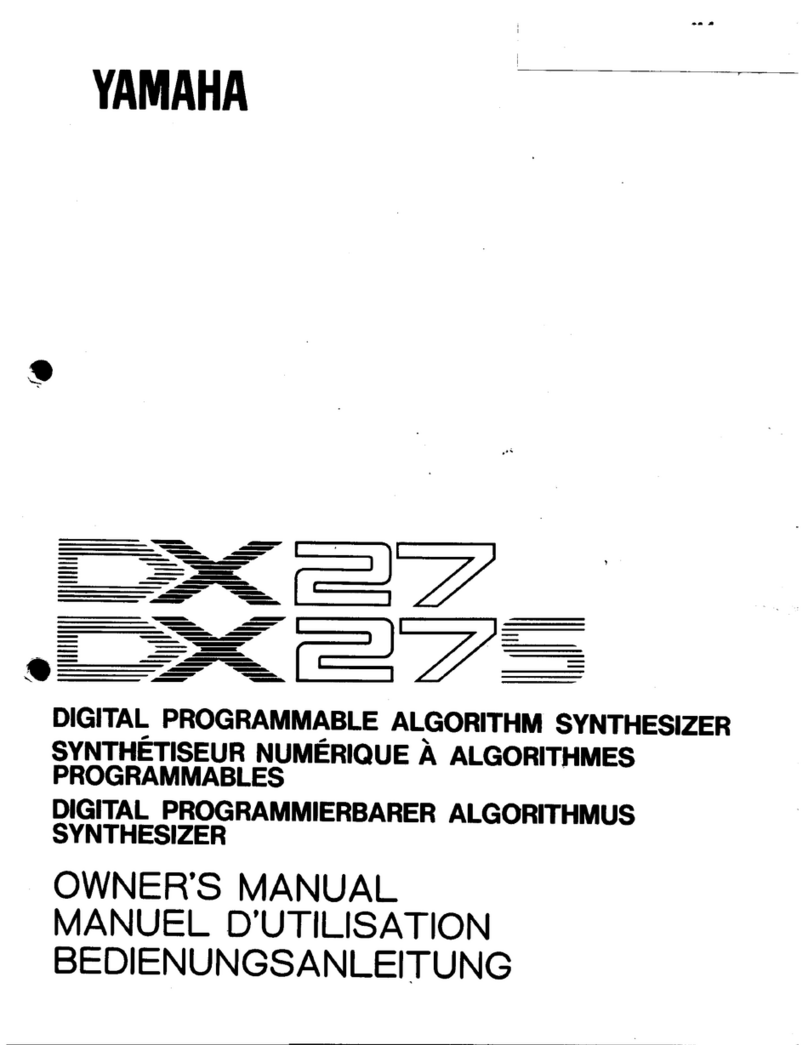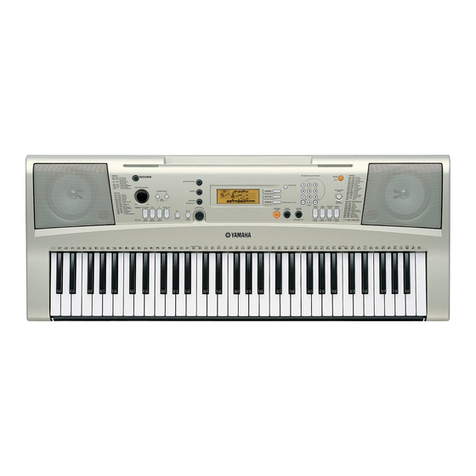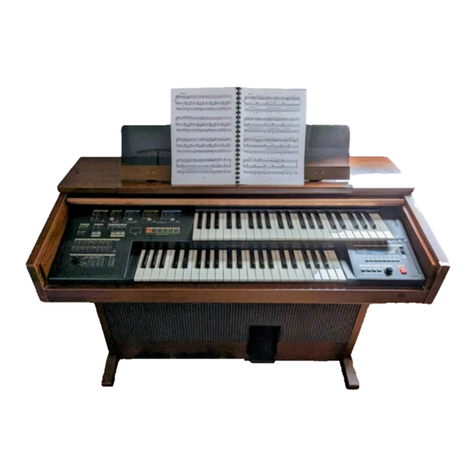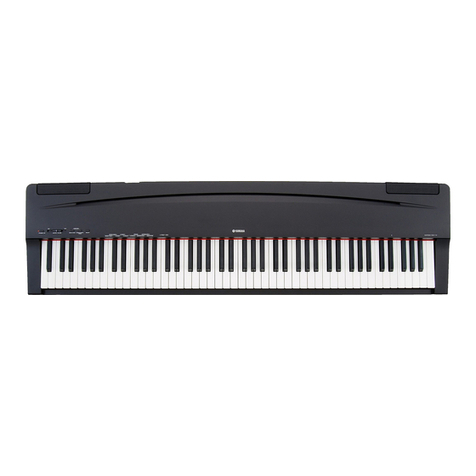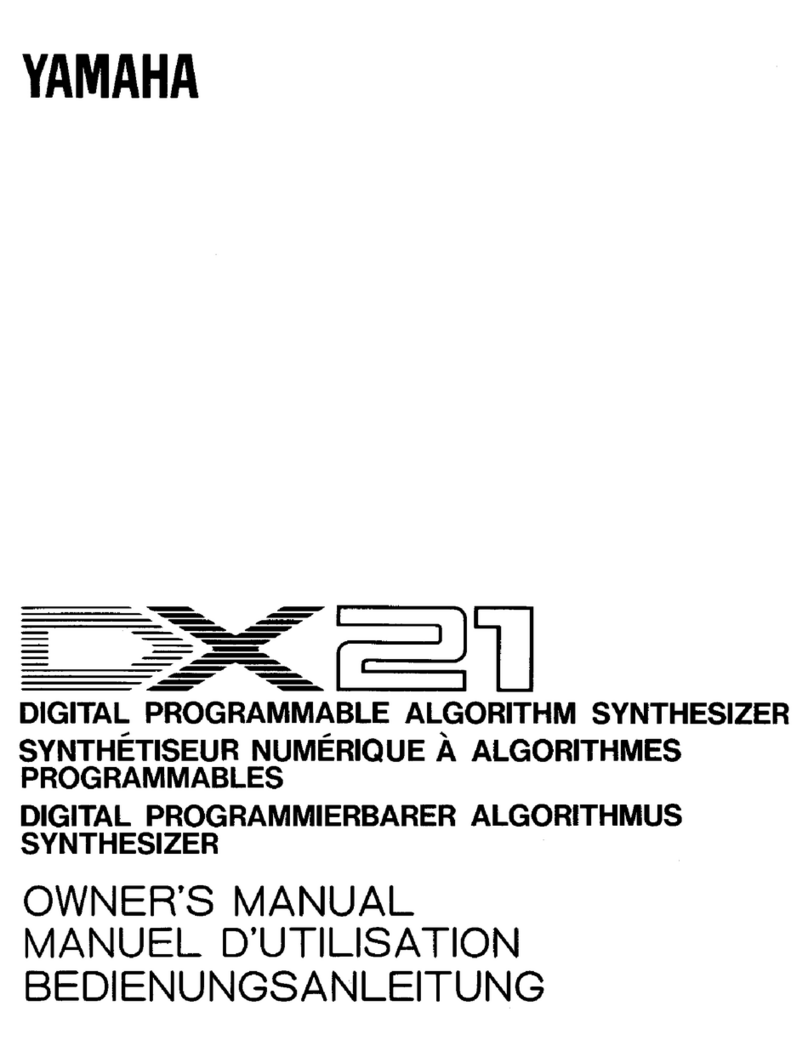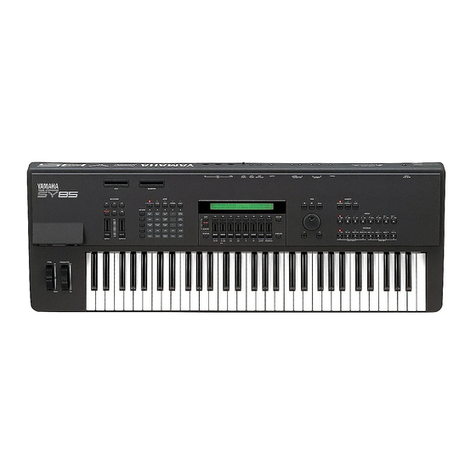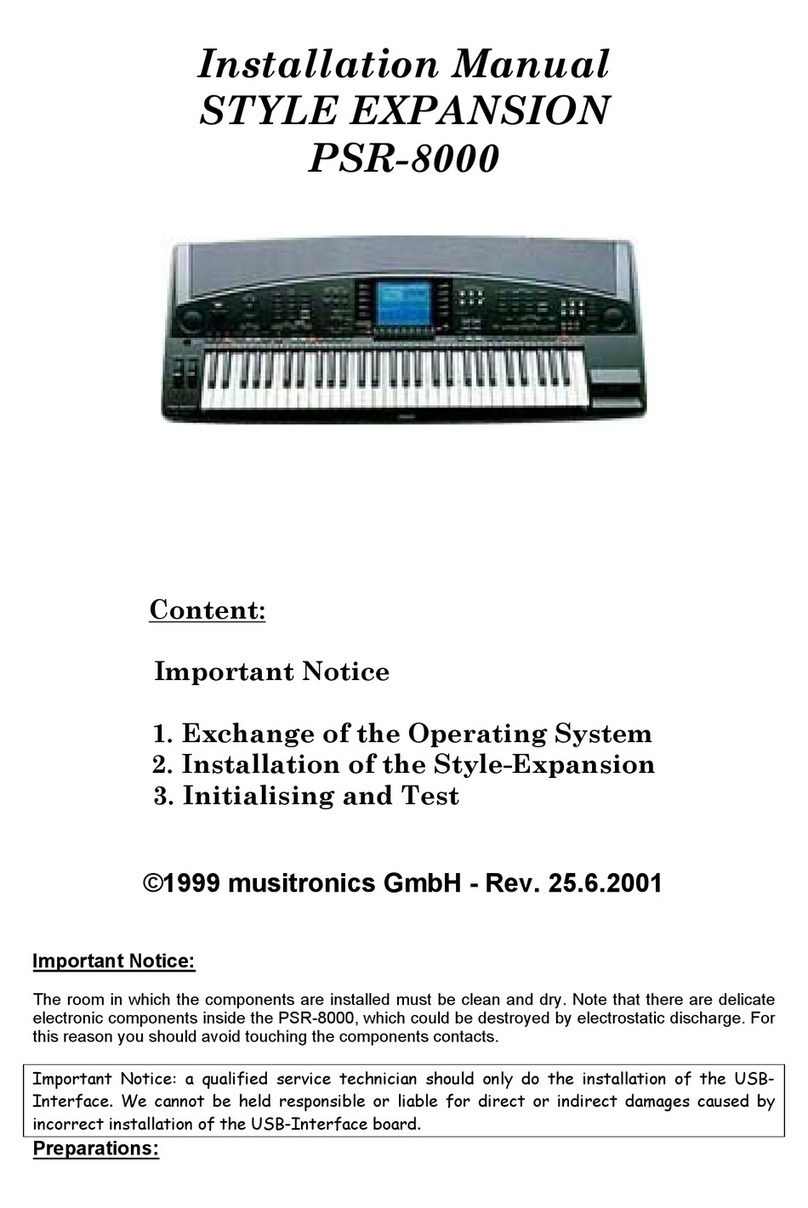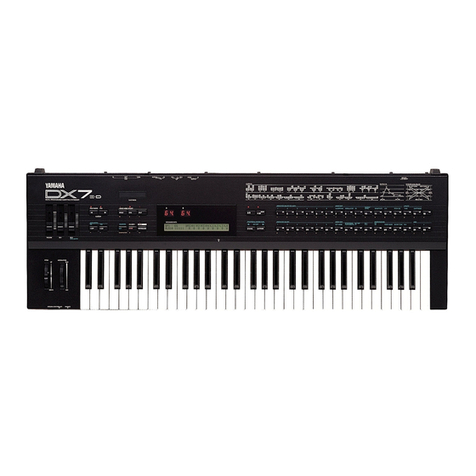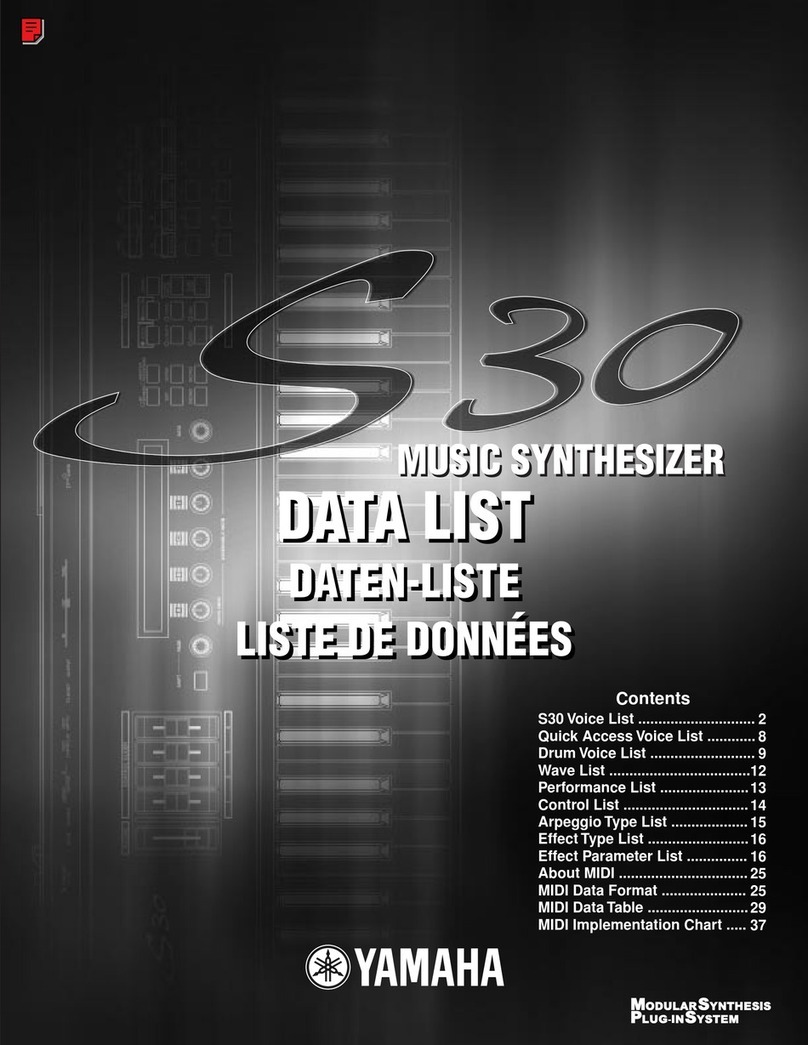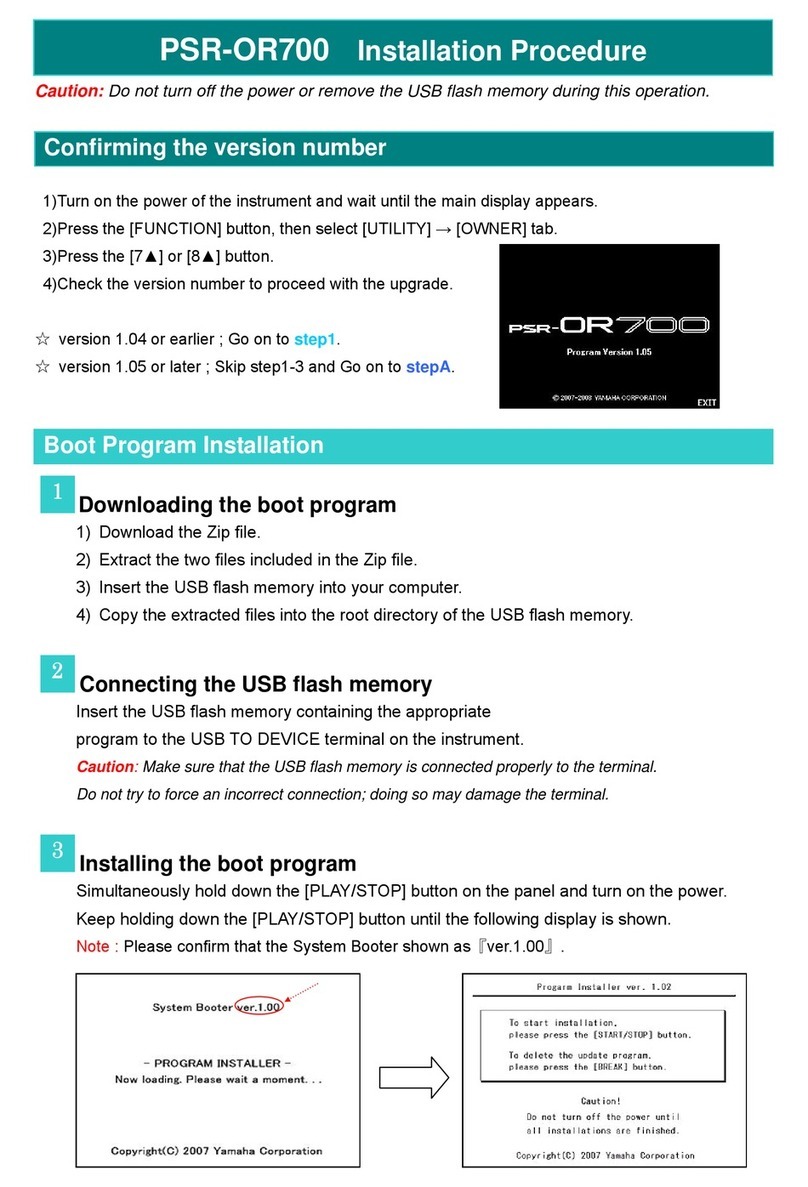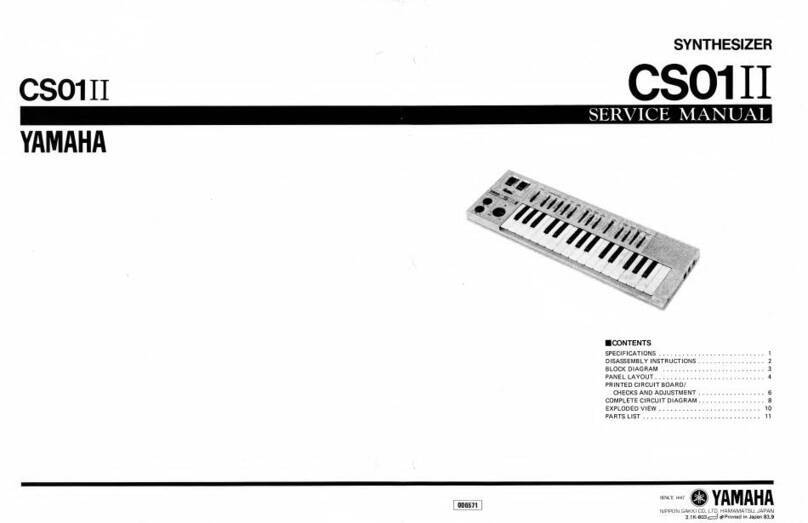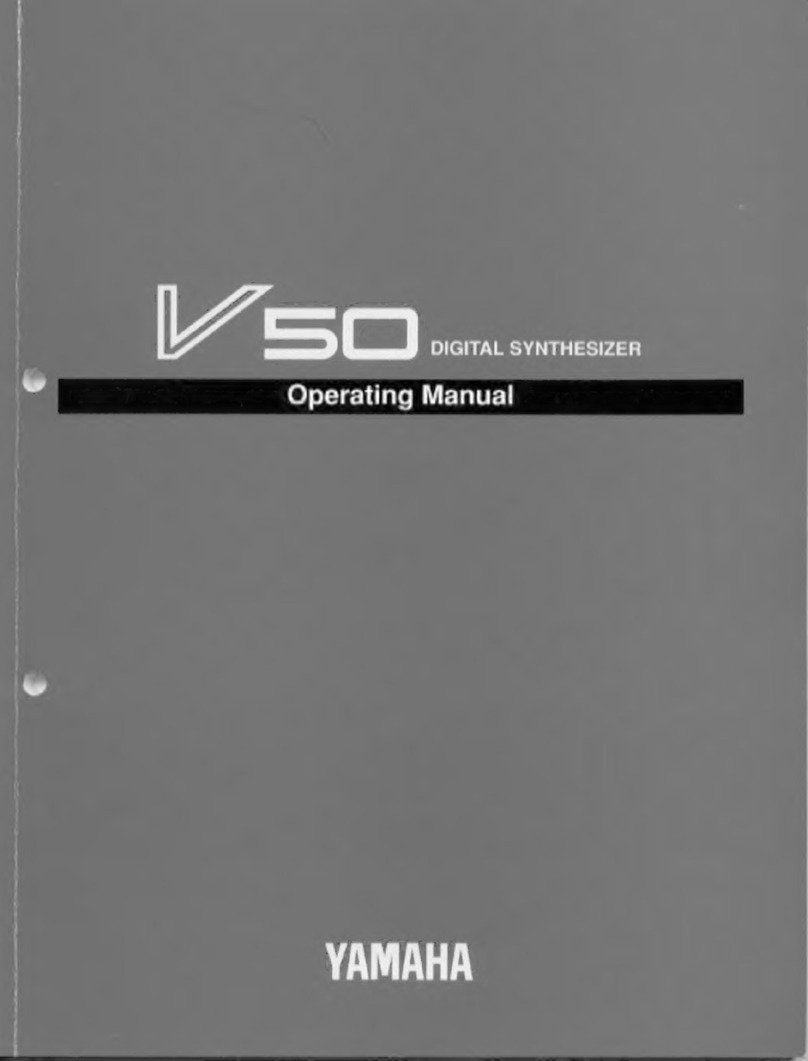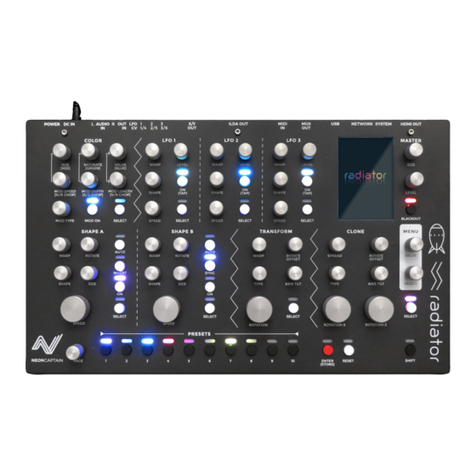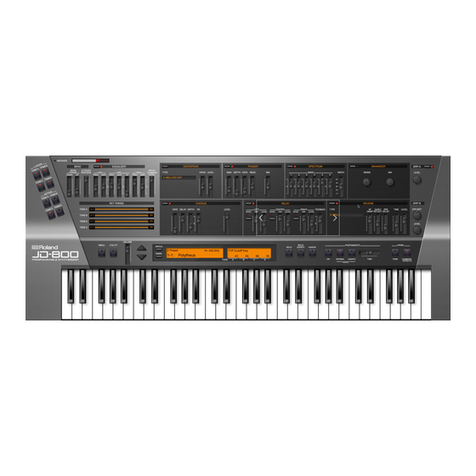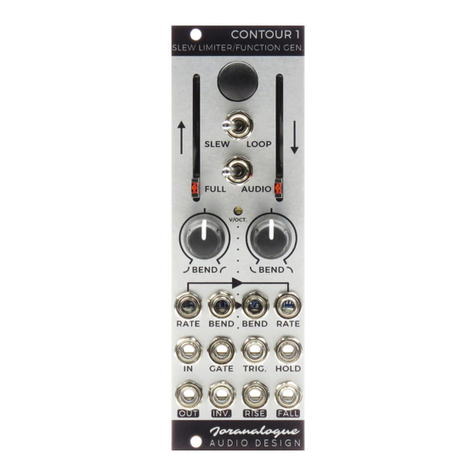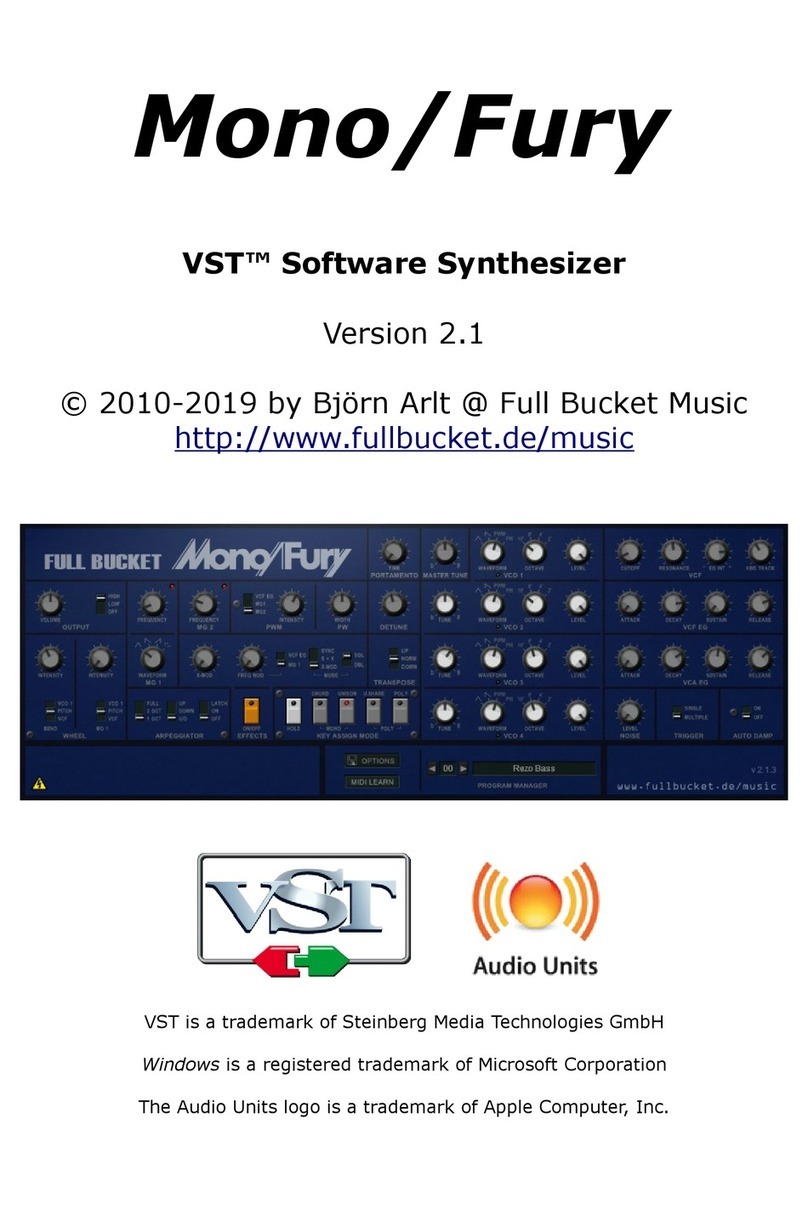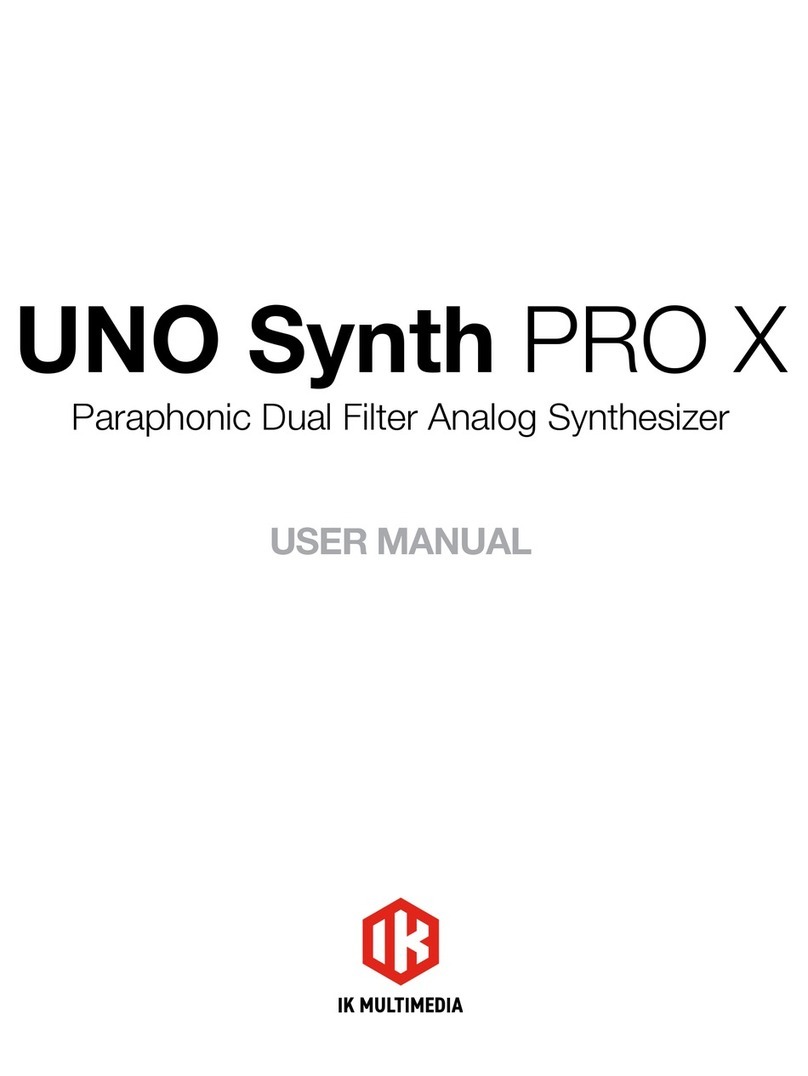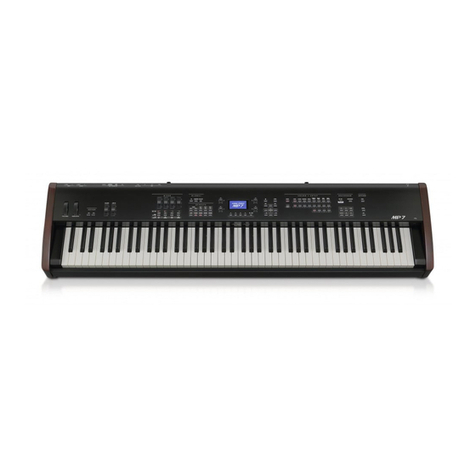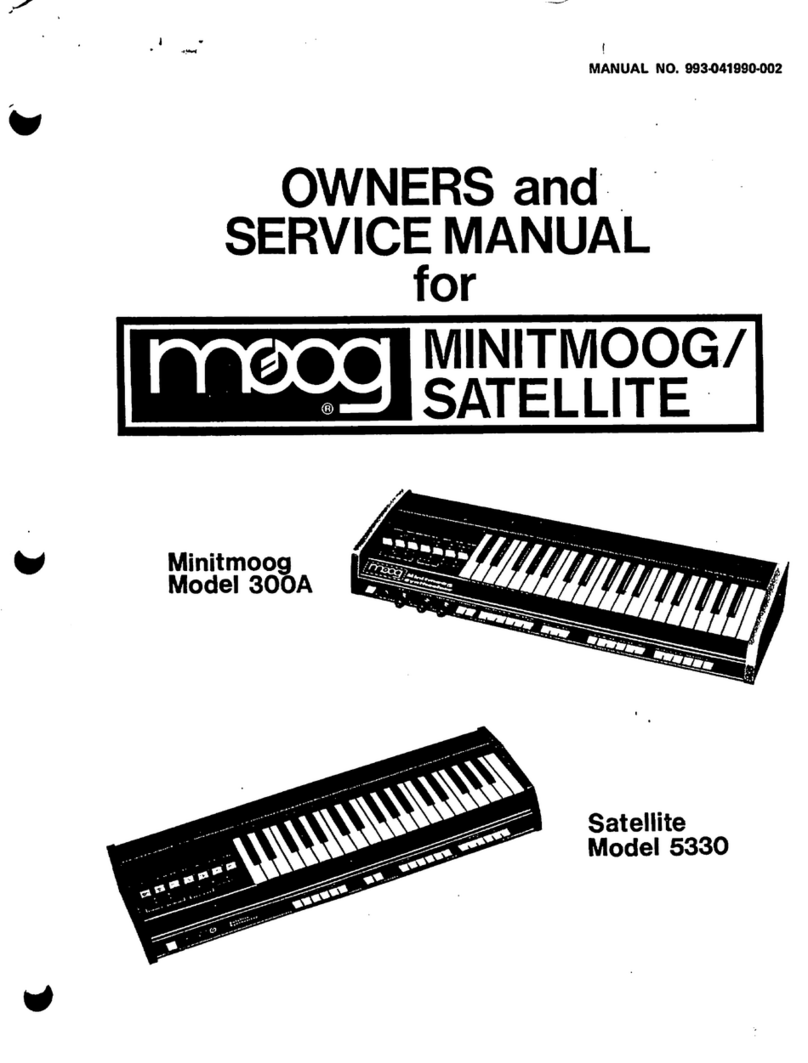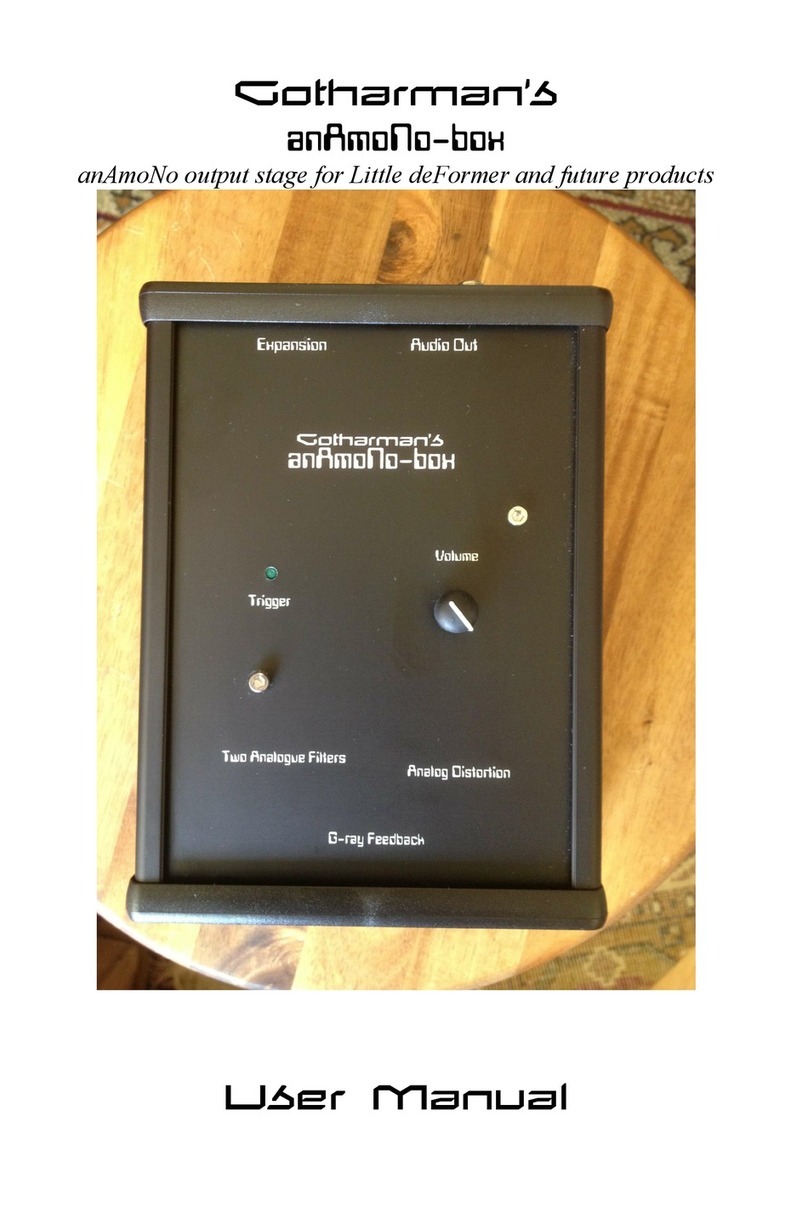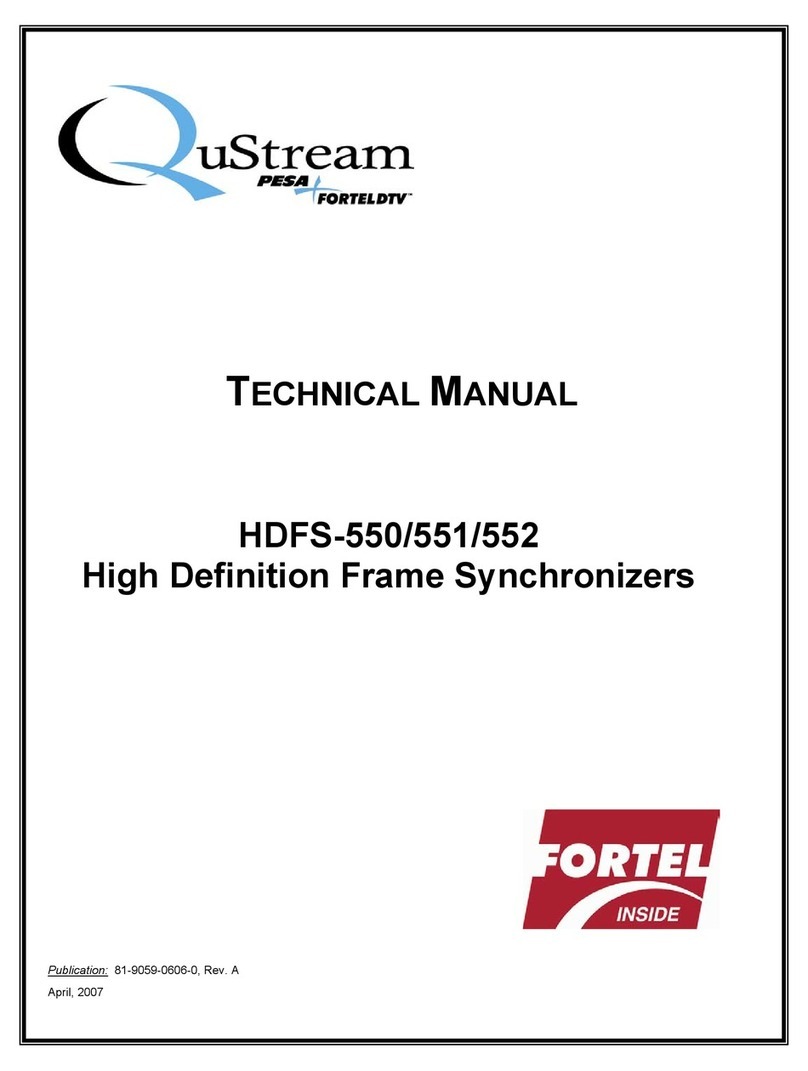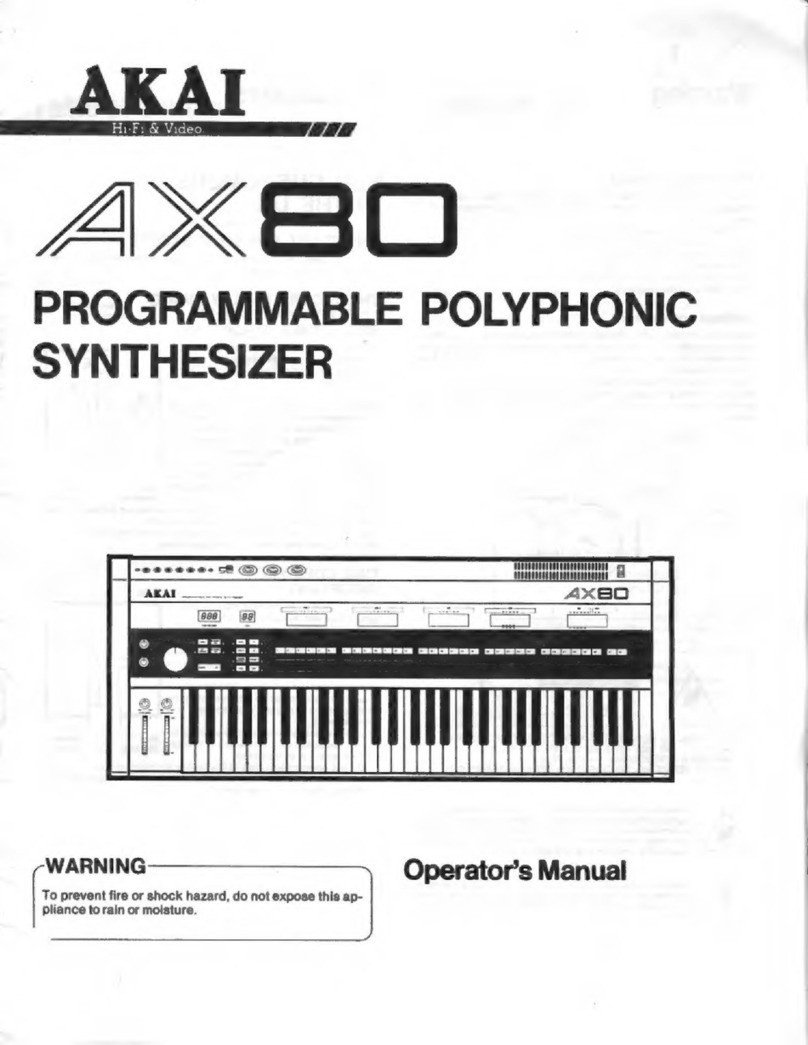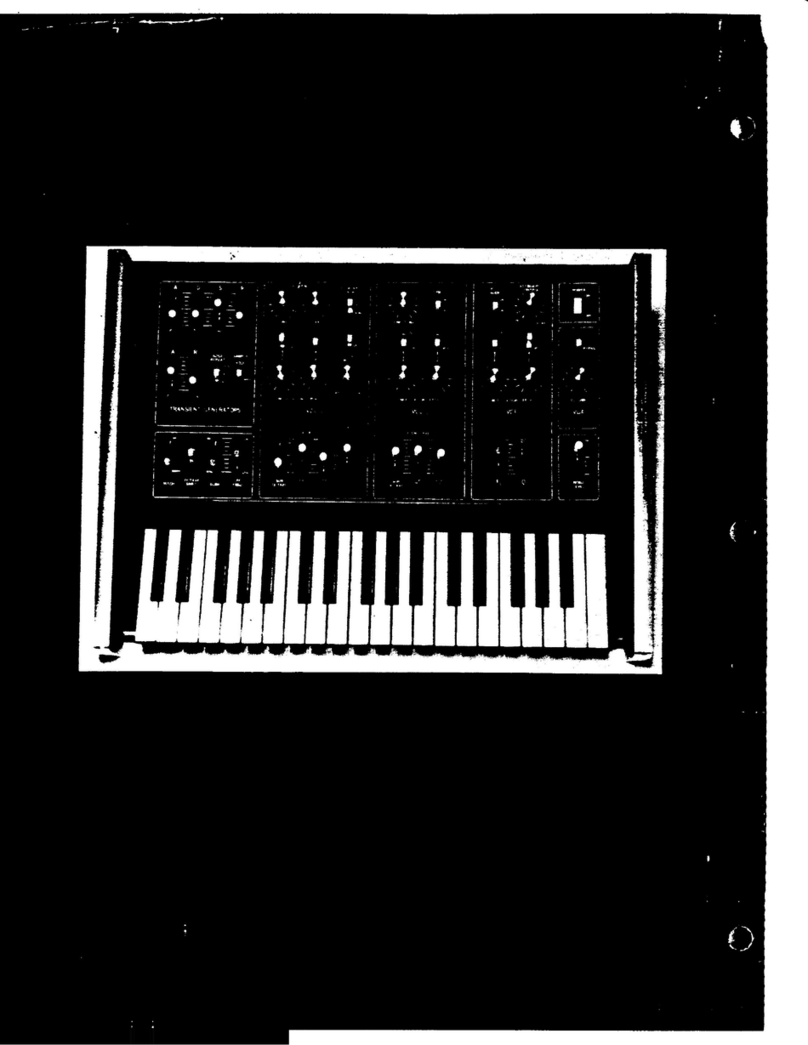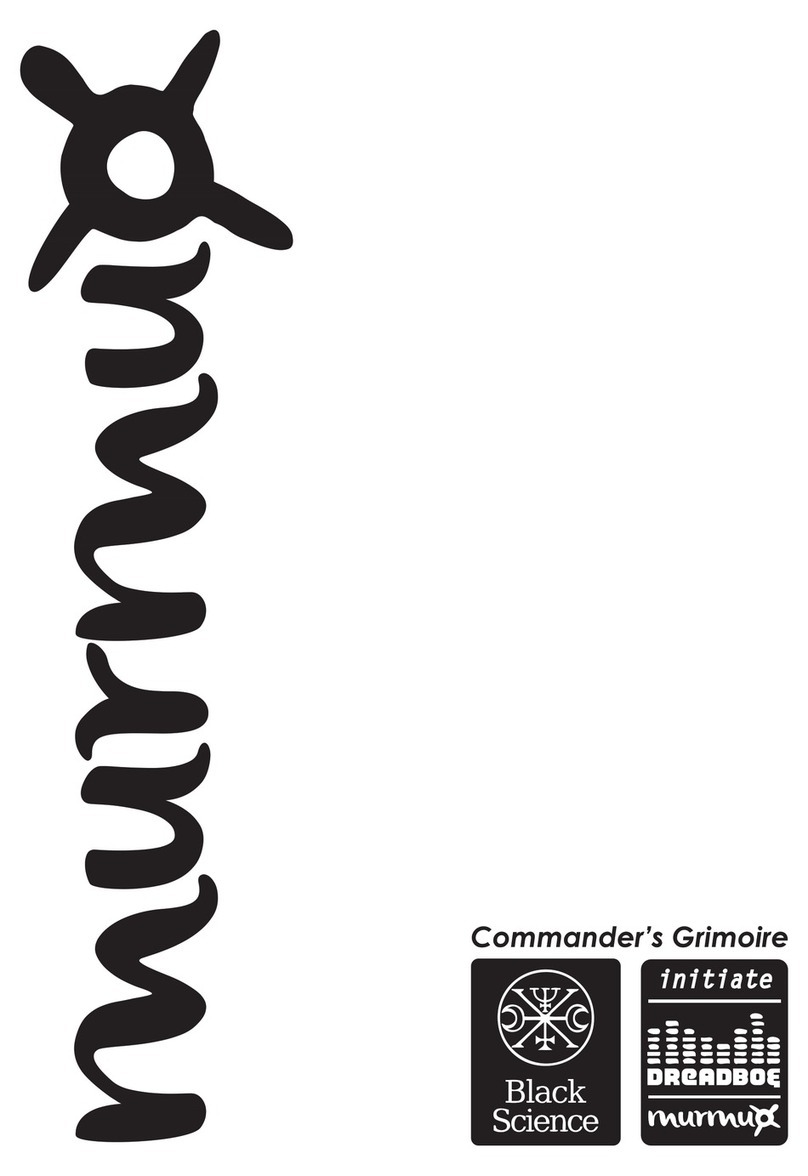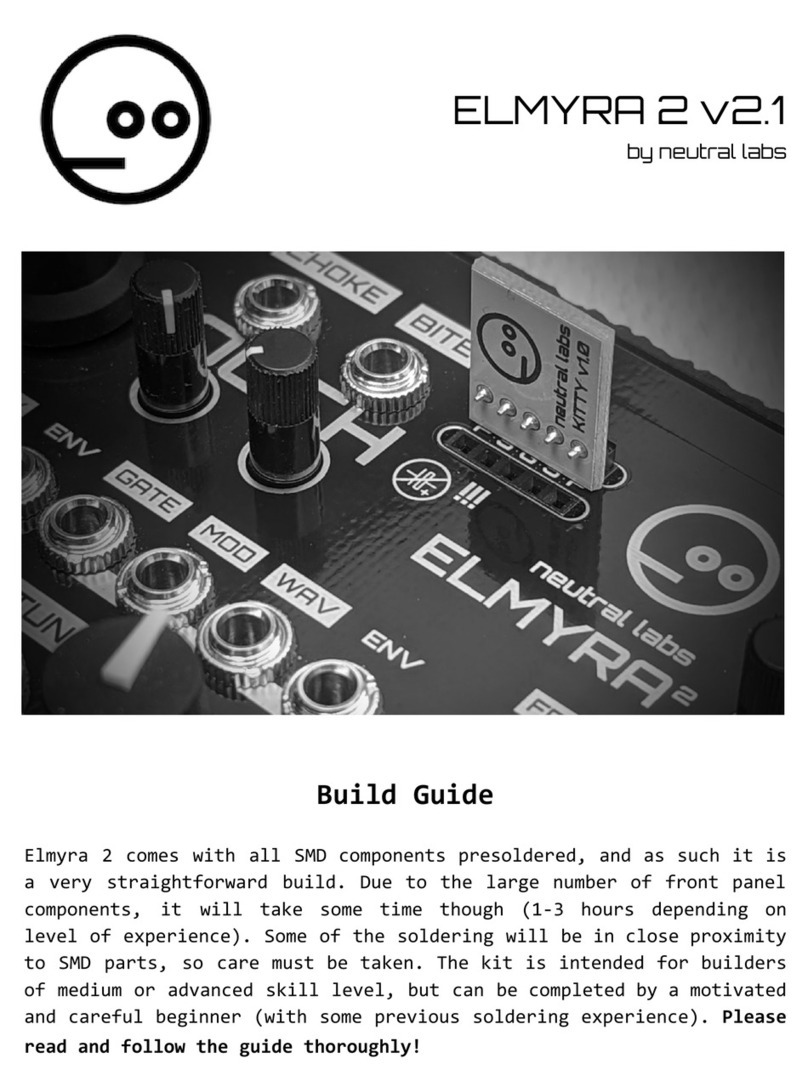
kmSt is "=~
FILTERS*
Simply stated, affK«r atten the harmonics containecf in anote to
change its colof or timbre. Each of the preset tones as adesign
feature the characteristic harmonic structure and nesanam points
that identify 3partktiter instrument
To understand the low pan and high fWtm, keep in mind th»
literal meaning of their names. The low pas filter, for example
passe$ only low frequencies, cutting oLhers. The lever raises or
tovi^rs the point abov« which this filter wlH not pass hefinonif^
In the oppo5ite way, the high pass filter will permit only high
frequencies above its set level to pass (cutting those below it).
Switch the filter to manuel control by putting the filter lever #
in the "control" position {downK You can now control the filter
characteristics (from lowpaas to htghpau; ^nd degree of resonance^
with the fihser frequency and nesonanoe ooiKtrols ^.
The closer the filter frequency cwitrols aiv to the high poiftion^
the morK harmonics arc alfowed to pass, resulting in avery bril-
liant sound. When you slide either or both frequency controls
irom ""low" to "hi^' while holding akey down, the sound you
hear changes from soft and muted to brrghl and crisp. |n the
rpeantime, the closer the resonance control is to the maKtmum
IMSition, the mors nasaF the lound becomes; emphasizing the fre-
qucncy just before cutoff. When you set the resonance control in
its center position, you can c/eate awah-wah effect by sliding the
frequency control back and forth.
NOTE: If the high filter is set to the "high" position, the
fundamental frequency of that tone may be cut and no
eound will occur.
ENVELOPE <C)€)
The term "envelope" may seem strange^ however, every sound
event h« an envelope. If you draw aheavy Ifne connecting the
peak^ of the sounds' waveform, you would have the event, or
"errvelope" waveform. Synthesizers employ separate envelope gen-
eretort with avarying number of controls to adjust the different
portions of the envelope waveshape. The Yamaha SY-2 preset
voices all have speciai preset envelope patterns, which sound as long
as the efwekJpe lever #is set to "preset" By placing the en-
velope lever in the control position, the preset envelope i-s cancelled
and the variable envelope control #are rww functional. When the
.attack time control is set to "ilow", along rvse tiim results. When
the release time control is set to "fong" the tone win continue to
soiind for quite some time after the key is released.
NOTE: When all four oontmla are set to their bottom poshlom
eperfectlv flat envelope ti cveeted -Le., no iound will
occur.
Lcm P*H Fiw FuMStfon
LOIN
High P1W9 Film- Funrtifn
LO'lV _^HIG"
Set UI : •--,r
-7-
